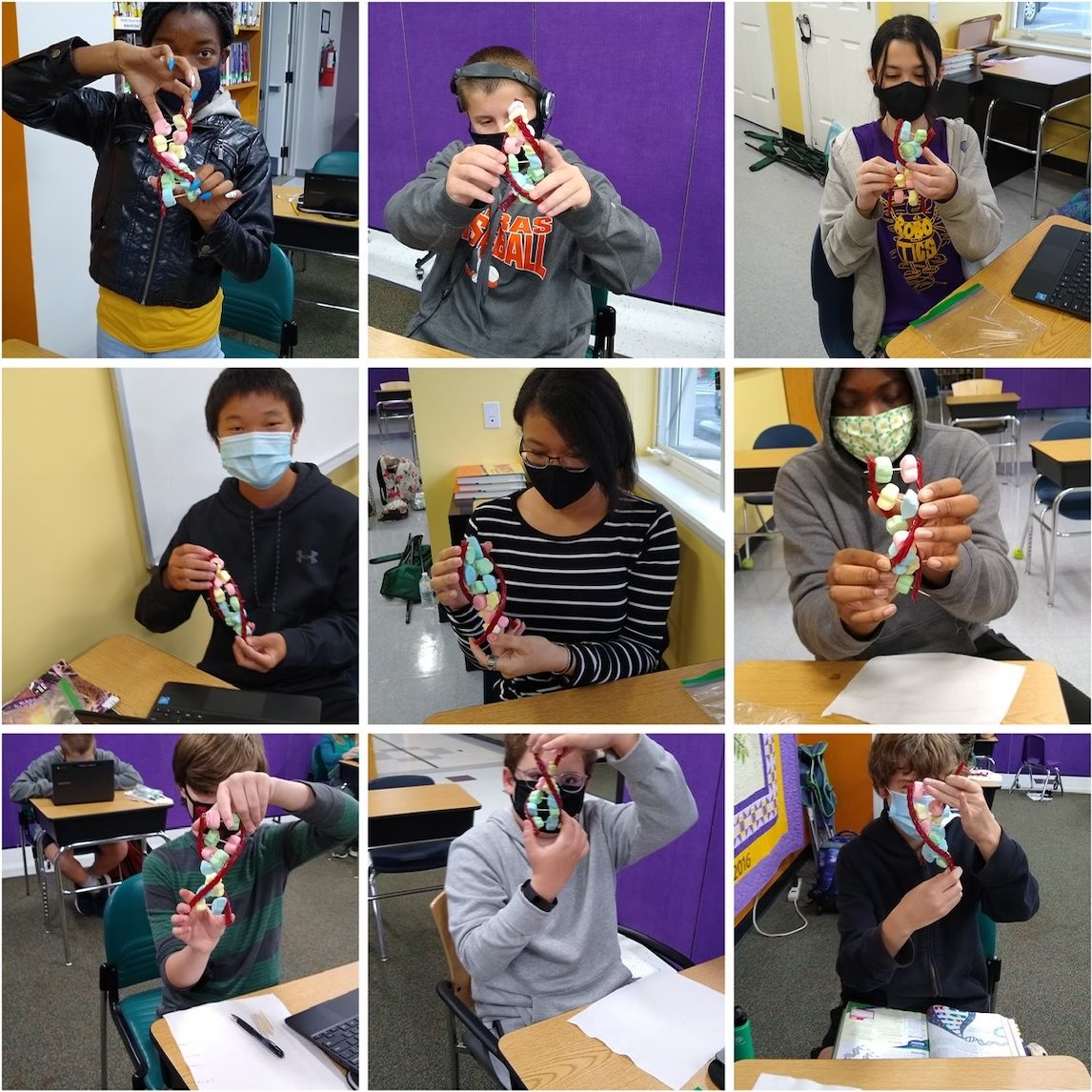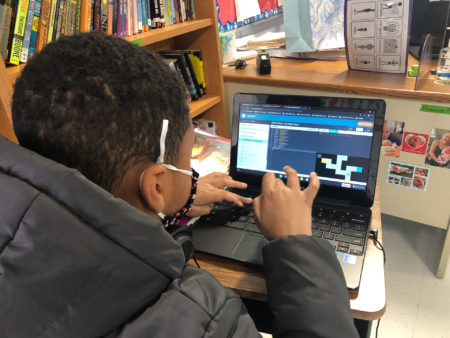December 3, 2020
While many aspects of middle school life have had to look different this school year (we miss you, foosball table!), one of the subject areas that our teachers have had to rethink the most is science. Our middle school science curriculum has always been lab and inquiry based, with a focus on student learning scientific principles experientially. However, there were a number of barriers this year to our regular approach. Labs, with their close proximity, shared supplies, and need for access to resources like microscopes, sinks, and our chemical supply closet, were an especially tricky task in a year where a third of our middle school students are off campus, students must remain 6 feet apart, teachers can’t distribute shared supplies, and students don’t change classrooms. Obviously, our science teachers have had to adapt!

[su_row][su_column size=”2/5″]
 Student working from an individually packaged kit
Student working from an individually packaged kit
[/su_column] [su_column size=”3/5″]
Adapting meant a lot of logistical changes. Students now complete labs at socially distanced stations, using individually packaged kits (including ones sent home to our off-campus learners), and modeling on the document cam so that students both on and off campus can follow along with lab instructions.

Teachers have also incorporated some new digital tools to help facilitate these labs. Peardeck, an interactive presentation program that allows students to work through a lesson as a class or individually, with options to color, draw, manipulate items on screen, listen to embedded audio and video, and get real-time feedback from teachers, has been especially valuable. Teachers have used it for lab instructions and reports, as well as to replace some activities that used to be done on paper or using manipulatives. Meanwhile, Google Meet features such as breakout rooms and the interactive whiteboard Jamboard have allowed students to continue to collaborate.
[/su_column][/su_row] [su_spacer] [su_row][su_column size=”1/2″]
[/su_column][su_column size=”1/2″]


[/su_column][/su_row] [su_spacer] [su_row][su_column size=”2/5″]
Some science classes have also incorporated more self-pacing and choice, which allows for more individualized feedback and support, a helpful approach when many students are off campus. Students have been able to use choice boards to select labs that they want to complete for each unit.
I’m very thankful for our flexible students and resilient, creative teachers that have made this year possible!
Emily McAllister
Middle School Director
[/su_column][su_column size=”3/5″]

[/su_column][/su_row]

